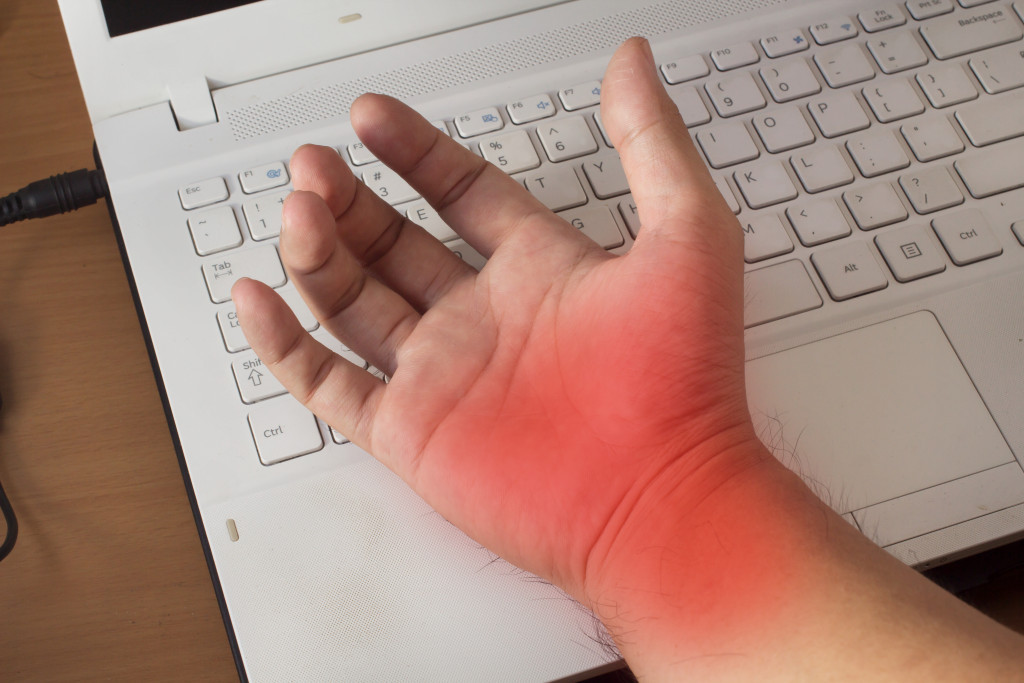- The wrist, a complex joint connecting the hand to the forearm, is prone to pain and discomfort due to frequent use.
- Repetitive strain injury, carpal tunnel syndrome, tendinitis, arthritis, fractures, sprains, and neuropathy are common causes of wrist pain.
- Regular breaks, stretching, and using ergonomic equipment can help prevent conditions like RSI and carpal tunnel syndrome.
- Practicing good posture, regular exercise to strengthen hands and arms, and maintaining a healthy lifestyle can keep wrists healthy.
- Seeking professional help for persistent wrist pain or symptoms is crucial for proper diagnosis, treatment, and prevention.
The wrist is one of the most used body parts throughout the day. From using your smartphone to typing on your computer, your wrists are constantly in motion. However, overusing the wrist can lead to pain and discomfort. The reasons for wrist pain can range from minor injuries to chronic conditions, and it is essential to identify these reasons for proper diagnosis and treatment. Here’s what you need to know about your wrist, why it hurts, and ways you can keep it healthy.
The Human Wrist
The wrist is a complex joint that connects the hand to the forearm . It is made up of eight small bones called carpal bones, which are connected by ligaments and tendons. These structures provide stability and allow for a range of movements such as flexion, extension, adduction, abduction, and rotation.
Wrist pain can occur due to various reasons, such as overuse injuries like carpal tunnel syndrome or sprains from sudden impacts or falls. Chronic conditions like arthritis or tendonitis can also cause persistent wrist pain.
Common Causes of Wrist Pain
There are some common causes for wrist pain. Here are some of them:

1. Repetitive Strain Injury (RSI)
RSI is a common cause of wrist pain and is caused by repetitive movements , such as typing or using a computer mouse. RSI occurs due to muscle fatigue and inflammation, leading to pain, stiffness, and weakness in the wrist. The best way to prevent RSI is by taking frequent breaks and stretching the wrists regularly. Using ergonomic equipment, such as a wrist pad or an ergonomic mouse, can also help reduce the risk of RSI.
2. Carpal Tunnel Syndrome
Carpal Tunnel Syndrome occurs when the median nerve, running from the forearm to the hand, is compressed. The compression causes numbness, pain, and weakness in the hands and wrist. This condition can also cause tingling or a “pins and needles” sensation. Carpal Tunnel Syndrome can be caused by multiple factors, including genetics and overuse . Wearing a wrist brace or taking medication may help alleviate the symptoms. In severe cases, surgery may be necessary.
3. Tendinitis
Tendinitis is the inflammation of the tendons that connect muscles to bones. Wrist Tendinitis is common among athletes and people who perform repetitive actions, such as carpentry work or playing sports. Symptoms include pain, stiffness, and swelling in the wrist area. Resting the wrist and using ice packs to reduce inflammation are typical treatments for Tendinitis . Wrist support, such as a splint, may also help.
4. Arthritis
Arthritis is a chronic condition that affects the joints. Rheumatoid arthritis can cause pain and stiffness in the wrist as the immune system attacks the lining of the joints. Osteoarthritis occurs when the cartilage that cushions the bones in the joints breaks down. Arthritis can lead to pain, swelling, and inflammation in the wrist area. Treatment options include medication, physical therapy, and surgery in severe cases.
5. Fractures and Sprains
A broken or sprained wrist is a common injury that can cause wrist pain. A fracture occurs when one or more of the bones in the wrist are broken. A sprain occurs when the ligaments that connect the bones are stretched or torn. Symptoms include pain, swelling, and difficulty moving the wrist. Treatment options include rest, ice, compression, elevation, and immobilization with a cast or splint. Physical therapy may also be recommended.
6. Neuropathy
Lastly, neuropathy can also cause wrist pain. Neuropathy is a condition that affects the nerves and can be caused by diabetes, alcohol abuse, or certain medications. Symptoms include numbness, tingling, and weakness in the wrists and hands. If you ever experience these symptoms, ensure that you visit a reputable neuropathy center . They can diagnose and provide treatment options, such as medication and therapy.

Keeping Your Wrist Healthy
To prevent wrist pain and injuries, it is essential to take care of your wrists. Here are some tips to keep your wrists healthy:
- Take regular breaks from repetitive activities.
- Stretch your wrists regularly throughout the day.
- Use ergonomic equipment to reduce strain on your wrists.
- Maintain good posture while using technology or performing tasks that require hand movements.
- Exercise regularly to strengthen the muscles in your hands and arms.
Understanding why your wrists hurt can help you take preventative measures and seek proper treatment when necessary. By taking care of our wrists through proper ergonomics, stretching, and exercise, you can prevent pain and discomfort in this crucial joint. Remember to listen to your body and consult a medical professional if you experience persistent wrist pain or any other symptoms. The health of your wrists is vital in maintaining your productivity and overall well-being, so let’s give them the care they deserve. So, take breaks, stretch those wrists, and keep them healthy! Stay mindful of how you are using your hands throughout the day and make adjustments as needed for optimal wrist health.



















